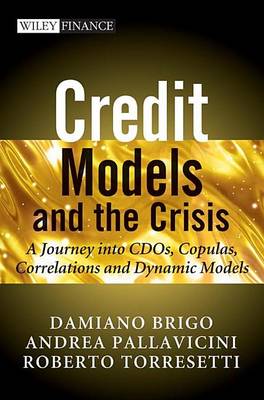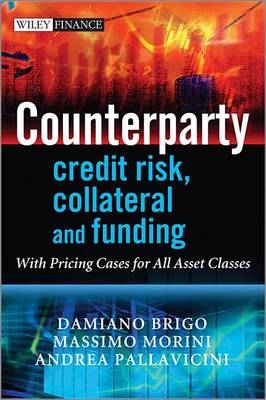Wiley Finance
2 primary works • 6 total works
Book 533
Credit Models and the Crisis
by Damiano Brigo, Andrea Pallavicini, and Roberto Torresetti
Responding to the immediate need for clarity in the market and academic research environments, this book follows the development of credit derivatives and CDOs at a technical level, analyzing the impact, strengths and weaknesses of methods ranging from the introduction of the Gaussian Copula model and the related implied correlations to the introduction of arbitrage-free dynamic loss models capable of calibrating all the tranches for all the maturities at the same time. It also illustrates the implied copula, a method that can consistently account for CDOs with different attachment and detachment points but not for different maturities, and explains why the Gaussian Copula model is still used in its base correlation formulation. The book reports both alarming pre-crisis research and market examples, as well as commentary through history, using data up to the end of 2009, making it an important addition to modern derivatives literature.
With banks and regulators struggling to fully analyze at a technical level, many of the flaws in modern financial models, it will be indispensable for quantitative practitioners and academics who want to develop stable and functional models in the future.
Book 611
Whereas the majority of quantitative finance books focus on mathematics and risk management books focus on regulatory aspects, this book addresses the elements missed by this literature--the risks of the models themselves. This book starts from regulatory issues, but translates them into practical suggestions to reduce the likelihood of model losses, basing model risk and validation on market experience and on a wide range of real-world examples, with a high level of detail and precise operative indications.
Counterparty Credit Risk, Collateral, and Funding, Second Edition is a unique financial guide, providing a much–needed reference for the technical details that other books leave out. Illustrating an in–depth quantitative approach to analyzing counterparty credit risk, funding costs, and valuation adjustments, this book helps practitioners apply sophisticated mathematical solutions to real–world problems. Quantitative models and methods are linked to concrete solutions in order to demonstrate that no single model is uniformly superior or universally applied. Each model is demonstrated step by step with emphasis on the question being examined. Designed to address the practical applications of the frameworks discussed, this book is invaluable for analysts and risk managers seeking useful solutions and more robust protection against counterparty risk and trading costs.
Counterparty credit risk is one of the main elements causing banks to fail, and affects all aspects of business. This book provides comprehensive, expert guidance on quantitative methods for tackling complex valuation problems.
- Apply sound theoretical frameworks to pricing and hedging
- Link specific models to specific real–world situations
- Solve practical problems using sophisticated math and stochastic calculus
- Understand the technical details from formulation to implementation
Issues of funding costs, collateral, and capital valuation have been on the industry forefront post–crisis, and remain the center of banks′ agendas today. The solution is a consistent, comprehensive, inclusive framework, with practical attention to model application across asset classes. Counterparty Credit Risk, Collateral, and Funding, Second Edition provides the invaluable technical guidance and practical insight that makes more accurate valuation possible.
Counterparty Credit Risk, Collateral and Funding
by Damiano Brigo, Massimo Morini, and Andrea Pallavicini
The authors stress that each model is suited to different situations and products, pointing out that there does not exist a single model which is uniformly better than all the others, although the problems originated by counterparty credit and funding risk point in the direction of global valuation. Finally, proposals for restructuring counterparty credit risk, ranging from contingent credit default swaps to margin lending, are considered.
Modern Interest Rate Markets and Models
by Marco Bianchetti and Massimo Morini
The on-going financial crisis has triggered a deep evolution of the classical framework for pricing and trading financial instruments, with macroscopic impacts on both vanilla and exotic contracts, particularly within the interest rate market. Yet, these classical approaches remain the focus of standard textbooks, resulting generations of new practitioners approaching the market in an inaccurate manner. This book seeks to rectify the situation with an entirely new approach that more accurately reflects the realities of the modern market. * Examine the ways in which the credit crunch impacted the interest rate market * Learn why classical approaches to interest rate modelling are no longer valid * Discover new patterns and mathematical frameworks that represent the current market * Generalise the most important interest rate models into modern multiple-curve versions With the most consistent, comprehensive approach to the subject, readers will find Modern Interest Rate Markets and Models to be an indispensible resource for building a stronger, more sustainable market strategy.


